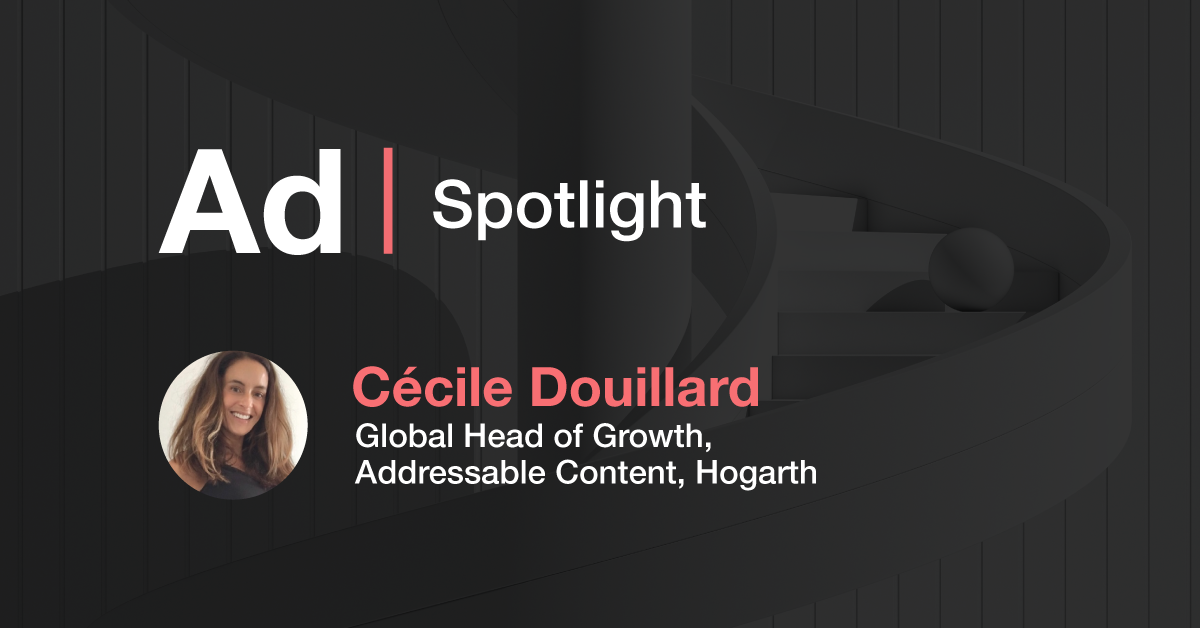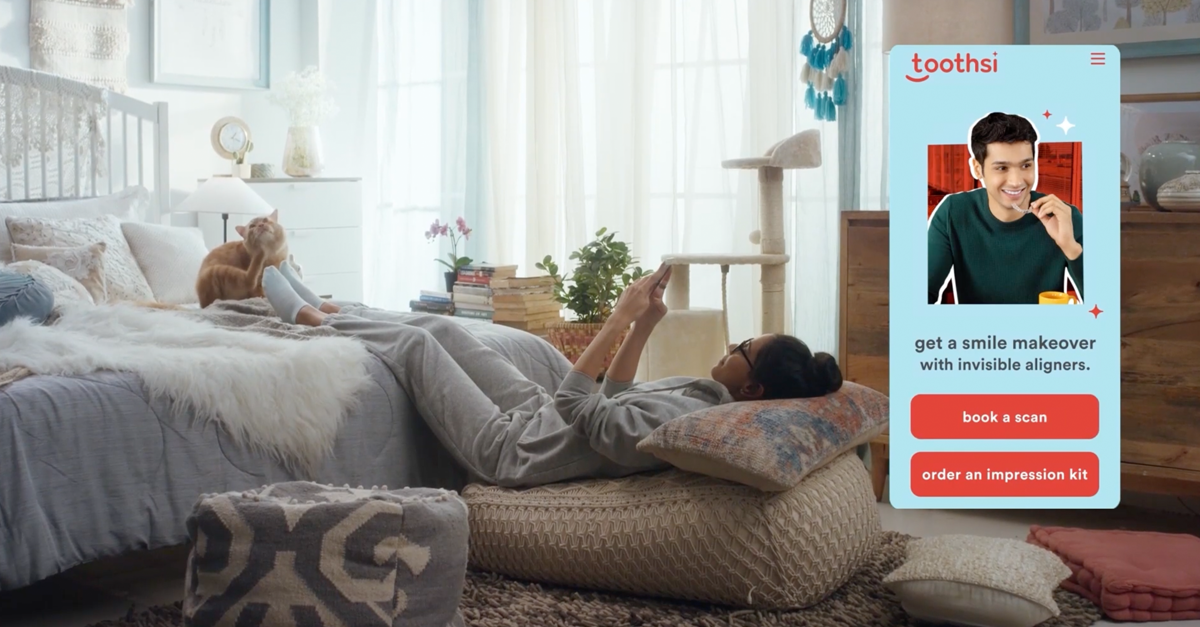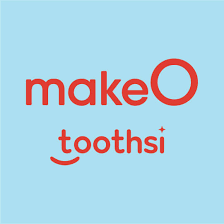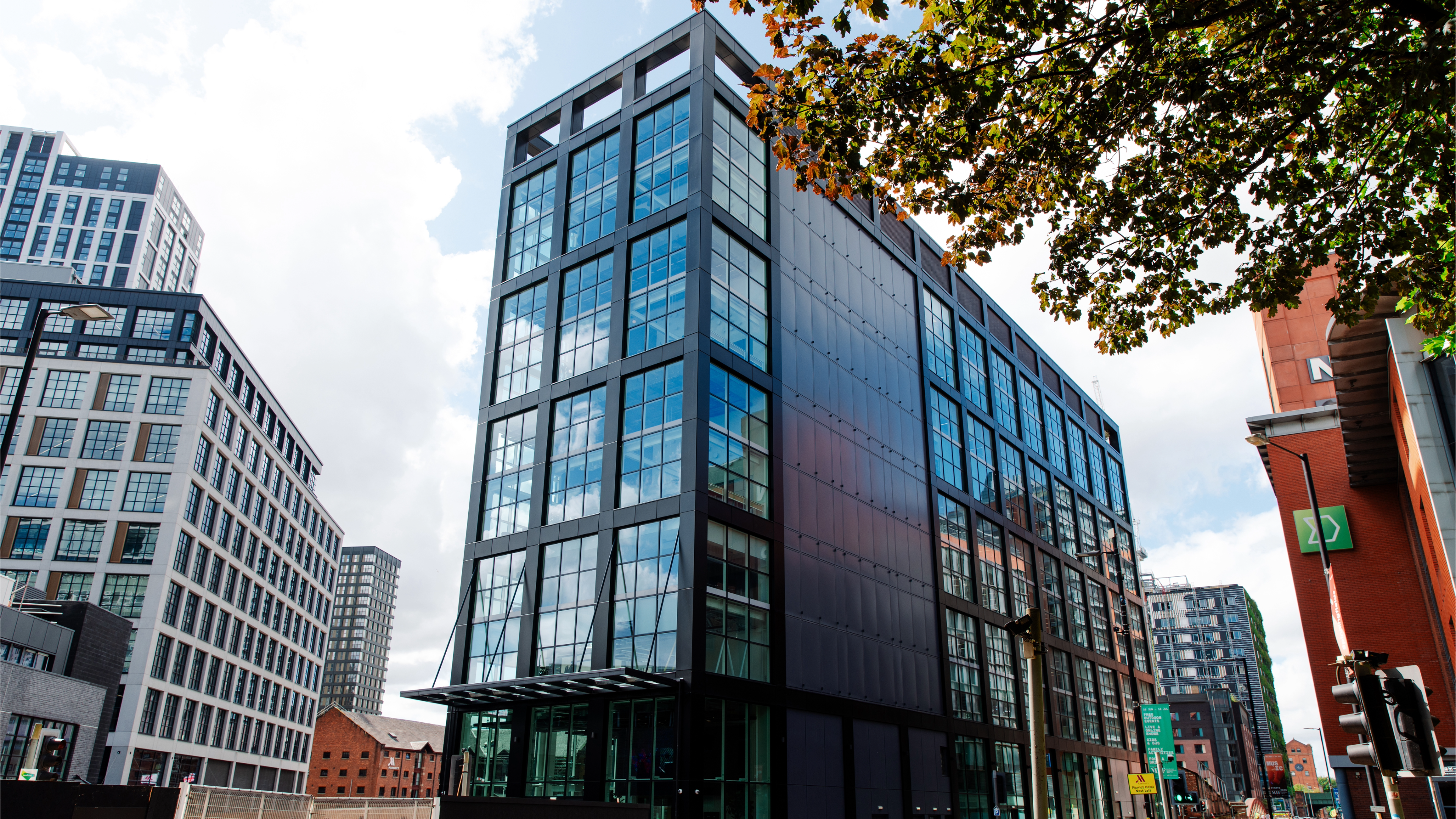Ad Spotlight: Cécile Douillard, Global Head of Growth, Addressable Content, Hogarth (WPP)

Welcome to the Ad Spotlight series where we hear from a different guest from the industry each month to get an insight into the landscape of advertising as well as their own personal experiences.
Our guest this month is Cécile Douillard. With experience in the media trading, measurement and data, and creative corners of the industry, Cécile has a comprehensive understanding of the addressable TV landscape. In her current role, she oversees the growth of addressable content, helping a wide range of clients capitalise.
Cécile dove into this wide-ranging subject to look at what’s happening now, and what is to come…
Q: Why did you choose a career in advertising?
A: Studying law gave me skills I use to this day, including how I process and structure my thoughts and work. But it can be rigid and conservative. I wanted to be in an environment that encourages versatility and fluidity. Somewhere where things weren’t as set in stone. Advertising offered a relatively boundaryless industry where there’s always something new to learn or try.
Q: What are the biggest challenges in the industry you see right now.
A: We need to work out how to adopt, drive, and encourage change at scale. You can suffer from information overload in our industry because everything is brand new all the time. It’s about making it as easy as possible to consistently go back to the drawing board and embrace change.
There is also a challenge around finetuning the increasingly interlinked ways of working. It’s breaking down silos, but we need to ensure we’re marrying a macro focus with bringing together the right experts in their field to achieve more intelligent advertising.
In terms of TV specifically, there's a real opportunity to optimize a fragmented landscape. I oversee the growth of addressable content across channels including TV and I’m seeing more and more content hitting the mark because we can drill down into the target audience, platform, and device that is best suited. The challenge is making sure people aren’t scared of navigating a sometimes convoluted ecosystem.
Q: Sum up the future of advertising in three words.
A: Intelligent: Driving intelligence at scale using the tools we have access to. There’s no excuse for us not to be smart in the way we function and create because some of the heavy lifting will be done by data and technology.
Agile: Advertising is anywhere, anytime, all the time. We need to be prepared to shift and adapt in a super-fast way without disturbing the fundamental principles.
Multi-dimensional: Making sure brands think outside the box. And we marry the rational and emotional when guiding them so, ultimately, all types of people, areas of expertise, and skills sets are represented.
Q: What is your biggest career highlight?
A: Rediscovering the importance of content. I spent years working in analytics and RTB engineering focused on trading efficiency. I needed reminding of the power of creative – and to feel I had a stake in it.
Working in the addressable function at Hogarth has let me be at the heart of it again. That first campaign where every element – storytelling, directors, copywriters, production, data – came together with passion is what I needed to reinforce the idea that content really matters.
I love that what the end creative looks like is partly my responsibility again and that creative, tech and data are considered in equal measure now.
Q:…and biggest regret?
A: It’s not really a regret, but certainly a big factor in my life, and that’s how my career got derailed by health issues. I suffer from endometriosis, which can have a devasting impact on a woman’s life. But I have actively tried to turn it into a positive, because I got to explore a side of myself that I didn’t know.
I set up a charity (endOF.org, which helped people with chronic pain get active) and continue to do lots of charity work to this day. But I do sometimes feel like I lost precious time while navigating my health issues.
Q: What is your favourite advert of all-time?
A: Growing up in France, we had this TV show called ‘Culture Pub’ which showed adverts from around the world. It was fascinating to see how creativity comes to life in different countries.
But if I had to pick one, it would be Nike’s ‘Find your Greatness’ campaign. It might be cheesy, but it perfectly captures an inspiring, inclusive message.
https://www.youtube.com/watch?v=X0JdbZEKz7k&ab_channel=GreatBigMindsCollection
You’re in a unique position to talk about the future of creative in the evolving TV ecosystem, so let’s do just that…
Q: What is your view on the relationship between data and creative when it comes to delivering effective advertising?
A: It’s a relationship of interdependency – and one that can be a happy marriage when done right. Data is the conduit for fuelling impactful creative moving forward and, when combined, they bring a new dimension of opportunities for brands and how they engage with consumers. Creative can be more tailored to specific audiences and be built on foundations based on relevant insights.
Data is also such a generic word that encompasses so much. There is absolutely a creative element to identifying the data that matters and using it correctly to inform how the campaign looks as well as how it is rolled out.
Q: Several case studies have shown how QR codes can lift attribution. What is the next step in the evolution of attribution methods?
A: QR codes are a very pragmatic way to capture direct attribution in a TV environment that, traditionally, has found it difficult to track direct engagement. But there’s room to grow because audiences aren’t necessarily warmed up to reacting to QR codes when they appear on screen. It’s still a bit of a novelty, although they aren’t!
This talks to a wider conversation about how TV ads are evolving. More and more, brands are weaving together creative experimentation with pragmatic templating. And there is still some friction there. But just because an ad is set up to lift attribution by using QR codes doesn’t mean it can’t also be creative. We’re seeing that in addressable campaigns all the time.
Q: What would you tell a brand wondering if its creative was suitable for addressable TV?
A: Everyone is a good candidate. Creative works best when it reflects market conditions and addressable TV allows you to consider this in the way content is built and delivered.
Everything we do now in advertising is audience driven. But audiences are not static. Your audience on Instagram today is not your audience on Instagram tomorrow in the way they consume content and interact with your brand. And the same goes for TV advertising. Understanding the subtleties - how people’s behaviour and the way they engage with the platform change – helps produce better creative. If we as people are not static, it is foolish to think about developing content that is static.
Enjoyed this Ad Spotlight? Check out previous editions to see how other names across the industry found their way into advertising, and what they predict for its future – including Mike Shaw (Roku) and Vanessa Goff-Yu (TAG).



